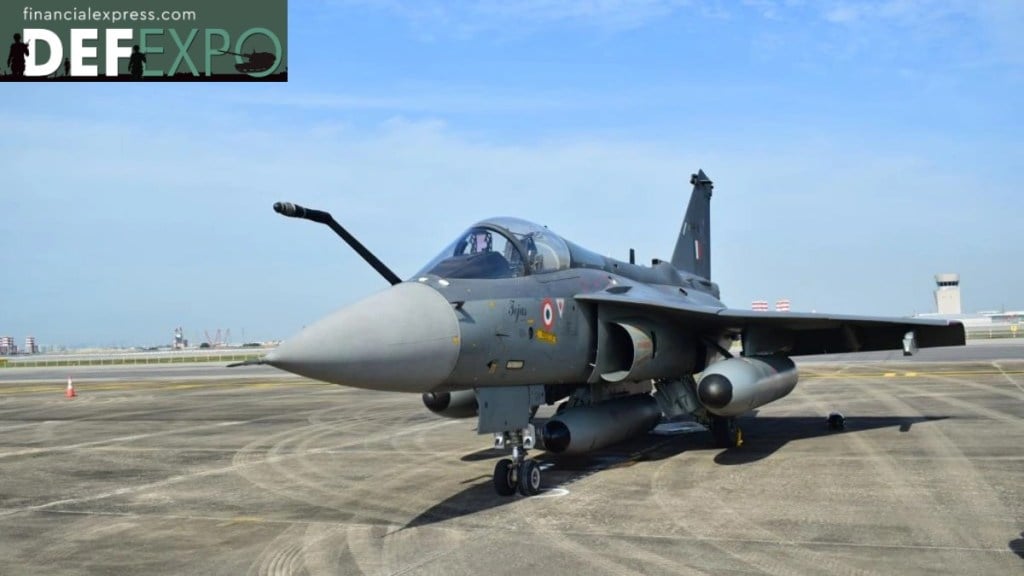The first flight of the prototype of Light Combat Aircraft Mk2 is set to be rolled out by the end of December next year.
The Mk2 is going to replace the ageing fleets of MiG-29, Mirage-2000 and Jaguars in the Indian Air Force (IAF). The chief of the IAF earlier this month had explained in detail the phasing out of some fleets after the completion of their operational cycle by 2035.
The research and development agency DRDO has set a target of the first flight to take off by December 2024 and by 2027 at least four prototypes are expected to be built, and before the decade is over the aircraft are expected to join the IAF service.
According to LCA Mk2 Project Director Dr V Madhusudana Rao, “There is a difference between the LCA Mk 2 and LCA Mk1 and Mk1 Alpha.”
Explaining the differences between the different variants he says: The design of LCA Mk2 is a new design, and comes with enhanced capabilities. This will replace the MiG-29, Jaguar fighters as well as Mirage-2000s.
The LCA Mk2 has 11 hard points while the Mk1 has 7 hard points and has the capability of carrying 6.5 tonnes of weapons.
The Mk1 has a capacity of carrying 2,450 kg (litre) of internal fuel and Mk2 has a capacity to carry 4700kg of fuel externally. Therefore, this has helped in enhancing the range to 3000km.
What more is unique to Mk2?
It has an onboard oxygen generating system (OBOGS) — a force multiplier. The Mk1 and Mk1A variants carry a bottle for the pilot and which has a maximum endurance of 1-2 hours. The Mk2 has a bottle which has endurance of almost eight hours, this means there is no duration limiting factor.
What is OBOG?
This DRDOself-sustainable oxygen generation technology is being used for the pilots of the Indian Air Force (IAF) who are flying LCA `Tejas’. This is on board the fighter jet in the cockpits and compensates for the rapid decrease in oxygen levels at high altitude.
Weaponry systems
There are different weapons integrated in the Mk2 variant – Russian weapons, French and western weapons and weapons that have been indigenously developed by DRDO. They have been integrated in the flight design, the DRDO official stated.
According to him the Mk2’s wings have been widened and it can carry Scalp bomb which weighs around 1350kg. However, both Mk1 and Mk1A don’t have the capability /capacity to carry Scalp bombs.
This variant of LCA is maintenance friendly and has a range of 570km. And with its air to air configuration this variant can easily take off in half an hour and 45 minutes to take off in air to ground. It can do a quick turn around and has role change capability. The Mk2 variant will be powered by GE-F414-INS6 engine.
Future Warfare
This variant has been developed keeping future wars in mind where Beyond Visual Range (BVR) missiles will play a big role. The new variant can carry 8-10 BVR missiles.
How much is the indigenous content?
Right now the content is around 75 per cent and this is expected to go up to 82 percent. The engines which will power it will be made in India as there is a MoU in place with the US based GE Aviation. Under the MoU the US company will transfer 100 percent technology to make the engines locally. And this will help in taking up the indigenous content to over 90 percent.
By December 2023 the first prototype will roll out and in case there are delays then March 2024 is the target and this will be followed by flight trials in December 2024.
Background
Last year during the Aero-India, the government had inked an order of 83 LCA Mk1A for the IAF and these planes will be powered by GE’s F404 jet engines.
Later in the year both HAL and GE Aviation inked a US$ 716 million deal for engines and support services to power the Mk-1A.


